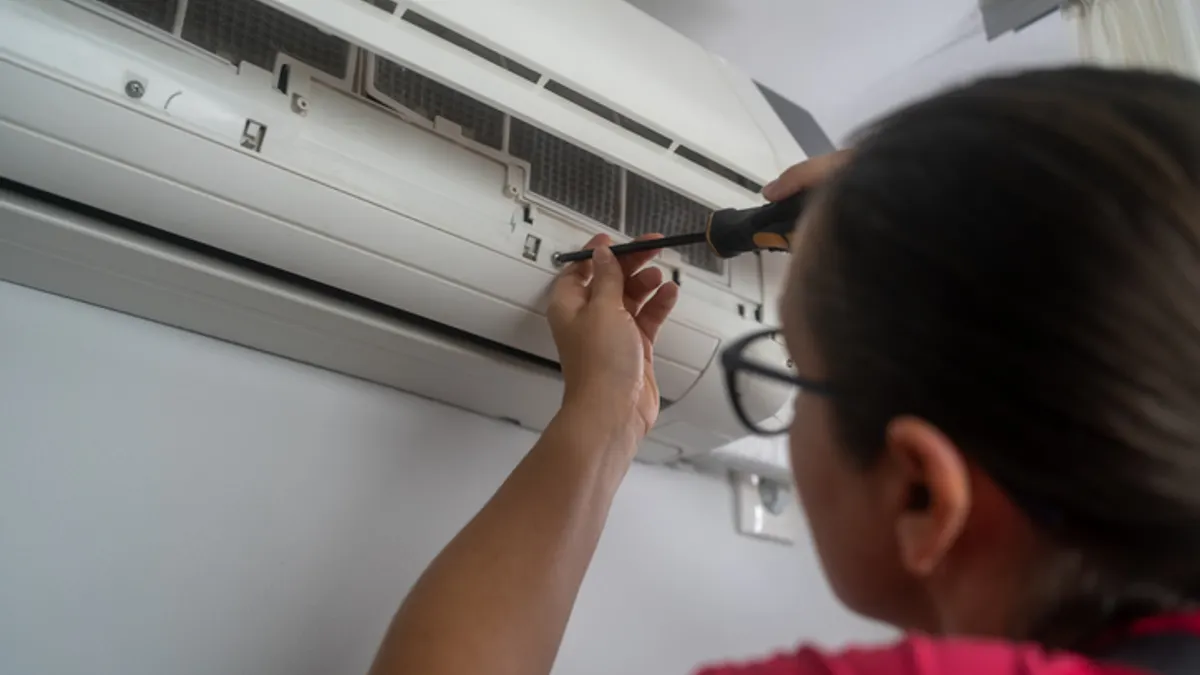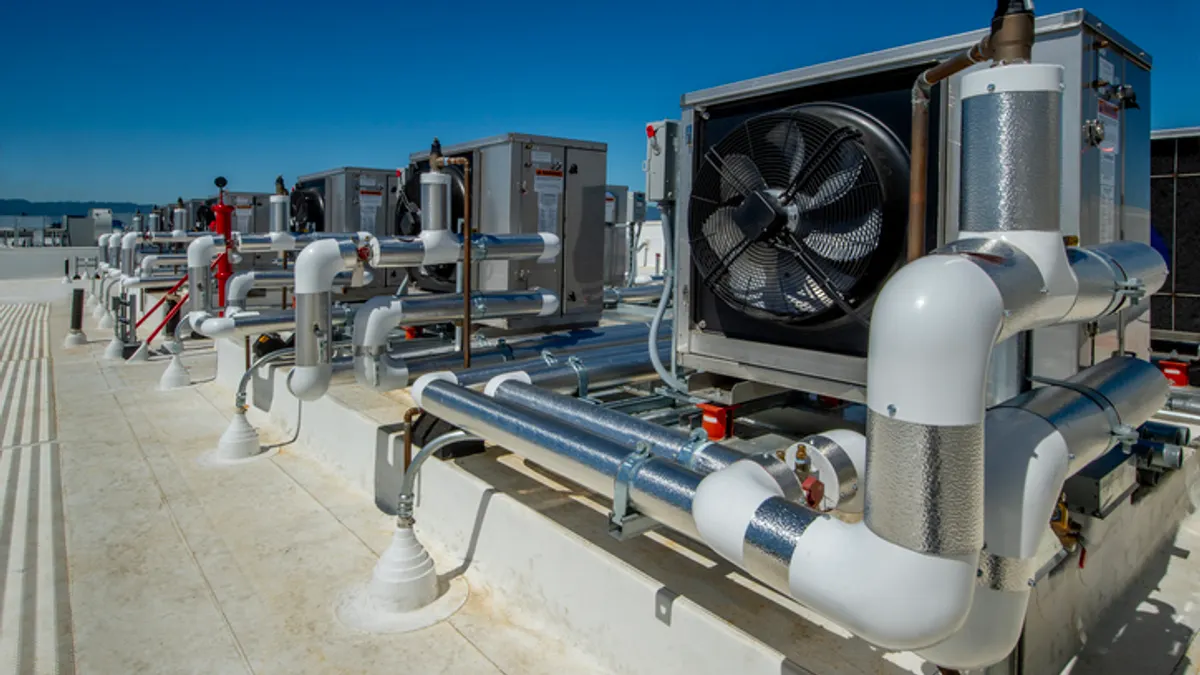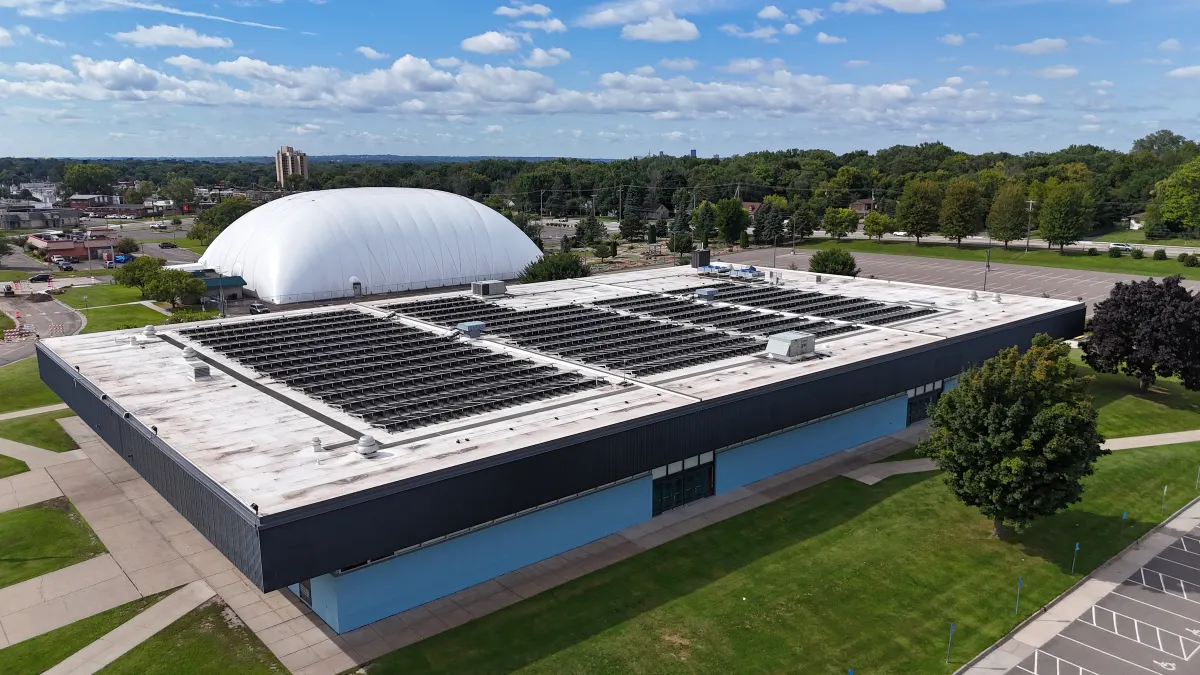Facilities managers tasked with reducing building emissions and energy use can strategically employ building performance data in their decision-making, according to speakers at the NFMT Remix Conference in Orlando last week.
Facility managers need to make every decision with an eye toward sustainability, from investments in chillers and boilers to lighting system upgrades, said David Borchardt, senior mechanical engineer at MD Energy Advisors. Borchardt spoke at a session on benchmarking and building energy performance standards.
Conversations about sustainability extend to tenants and lenders, who are increasingly seeking information about a building’s green credentials and sustainability-focused budgets, as well as to C-suite executives, who make property disposition decisions driven by a building’s environmental performance, Borchardt said. To incorporate sustainability objectives into facilities managers’ day-to-day jobs, Borchardt called for benchmarking, as the foundation of any sustainability endeavor; understanding upcoming regulations and aligning in-house sustainability goals with those regulations.
MD Energy Advisors’ energy engineer, Jared Lyles, said that “Facilities managers, a lot of times, will instinctively know what's wrong with their facilities and what the problem is. It's just hard to communicate that quantitatively.” The Energy Star Portfolio Manager is a tool Lyles recommended that can help operators measure and compare their buildings’ energy to similar buildings, past consumption, or a reference performance level. Keep in mind that energy consumption fluctuates, especially in response to weather changes, Lyles said. He underscored the need to understand site energy — the energy a building uses onsite — and source energy use intensity, which takes into account a building’s energy sources and total energy use.
In a session on pathways to building decarbonization, Ronak Shah, senior energy analyst at InSite, talked about the challenges facilities managers face. “Every asset, every portfolio is different. Each building is operated based on tenant requirements as well as building management systems and energy systems in those buildings. These challenges also vary from property to property and portfolio to portfolio,” Shah said.
Borchardt noted that “there are buildings currently using fossil fuels, and jurisdictions are encouraging electrification, but the buildings aren’t equipped for that, and neither is the [power] grid. Also, transformers in buildings aren’t equipped for [more] electric equipment.” He suggested that “some of these laws are going to bump into the realities of the grid, switchgear, transformers, electrification of buildings and [the] equipment facilities managers are operating.”
Where efforts to retrofit heat pumps into older buildings are met with cost hurdles, Eric Mobley, energy engineer at Sain Engineering Associates in Birmingham, Alabama, suggested a path to move in that direction in an interview at the conference. “If you can’t afford heat pump retrofits, you can look at optimizing the existing control sequences of the equipment you have onsite,” Mobley said. “You can get energy savings there and use those savings to buy new equipment when needed. You can reprogram the sequences and add new additional sequences specifically designed for energy saving in the computer software that controls HVAC units for example,” Mobley explained.
InSite’s Shah said preparing to meet decarbonization requirements involves the following steps:
- Gather facility data. This includes onsite building energy consumption of equipment like backup generators, as well as purchased electricity consumption aggregates — monthly electricity use and changes in usage patterns through the year — mobile sources associated with the property, and fugitive emissions from fire suppression equipment and refrigerants, which typically elevate carbon emission numbers.
- Establish a baseline. Determine how energy consumption has changed in the past few years and how that impacts the baseline.
- Track key performance indicators and set emissions reduction targets. This step involves gauging major carbon emission drivers, such as mobile fleet emissions, to determine key KPIs and set specific targets, such as increasing energy efficiency by 20%.
- Develop action plans.This can include implementing energy conservation measures, optimizing or upgrading systems and improving the building envelope.
Other key questions to consider involve whether a particular measure drives behavioral change in tenant engagement and what renewable energy credits, carbon credits, rebates or other incentives facilities managers can utilize to implement their decarbonization plan.
On a smaller scale, Daniel Mabe, CEO and president of the American Green Zone Alliance, made some suggestions in a session on the electrification of landscape maintenance. Battery-powered blowers are an energy-efficient alternative to gas blowers, Mabe said. Battery-powered blowers offer quieter operation and are especially suited for early morning tasks near hospitals, libraries or dormitories, he noted. Flat-form or rechargeable batteries to power hedge pruners can power multiple tools, minimize service costs, reduce noise, provide cleaner cuts and communicate data back to a central location for monitoring, Mabe said.





















